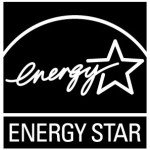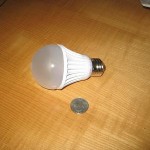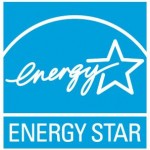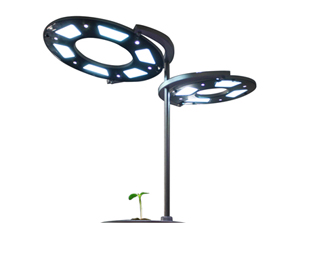Is OLED the new Disruptive Technology in Solid State Lighting?
OLED, or Organic Light Emitting Diodes are the new technology on the block, finding application first for the display market as an LCD replacement in the handheld battery powered devices such as cell phone displays. They have progressed to TV and computer monitors as replacement for traditional LCD with backlighting. Their ability to be manufactured as a thin sheet has allowed thickness reduction in these products and their high contrast ratios make them more than competitive with LCDs which require a backplane illumination.
But like the progression of their conventional brethren, the LED, they are following the path to another big volume application: Solid State Lighting. To date they have been hindered by a two major factors: (1) Relatively limited life compared with conventional LEDs (about 5,000 hours to the L50 (50% decrease in output) point compared with about 20-50,000 for conventional HB LEDS and (2) significant lower light output than HB leds ( about 25 lumens versus 100-150+ lumens for LEDS). However, their physical form is so radically different from conventional LEDs that their advantages for future lighting technology make them the next disruptive technology in SSL. Read more >>
EPA Releases Final Draft of Energy Star 1.0
 The EPA has released if Final Draft of Energy Star 1.0 Program this week (December 20, 2010). Of interest:
The EPA has released if Final Draft of Energy Star 1.0 Program this week (December 20, 2010). Of interest:
1) Accent and Cove Lights are moved from Residential to Commercial Spec
2) SSL under 5 watts only have to meet Read more >>
Energy Star Exempts ‘snow-cone’ LED bulbs from certification program!
 In a surprise move, Energy Star says that it plans to remove “non-standard lamps” from the Energy Star Integral LED Lamps specification. Specifically the low cost “Snow Cone” style bulbs are being exempted. Many in the industry fear this will lead to lower quality, inferior products that may hurt the consumer image of LED lighting in general.
In a surprise move, Energy Star says that it plans to remove “non-standard lamps” from the Energy Star Integral LED Lamps specification. Specifically the low cost “Snow Cone” style bulbs are being exempted. Many in the industry fear this will lead to lower quality, inferior products that may hurt the consumer image of LED lighting in general.
Why the sudden move? Just a guess from myself, perhaps the EPA is realizing that the CFL bulb replacements for incandescents are somewhat of a BIG MISTAKE considering they use small amounts of mercury vapor AND the horrid effect they have on the nation’s power grid due to their inherently LOW power factor. Perhaps the lesser of evils, the EPA wants cheap low quality LED bulbs to displace cheap low quality CFL’s!! Read more >>
Energy Star may be turning into a Black hole of Requirements for companies.
Here is a GREAT article from EDN recently!
By Tam Harbert, Contributing editor — EDN, December 14, 2010
 Technology manufacturers may start dropping out of the US EPA’s Energy Star program as a result of new certification requirements scheduled to go into effect on January 1, 2011.
Technology manufacturers may start dropping out of the US EPA’s Energy Star program as a result of new certification requirements scheduled to go into effect on January 1, 2011.
The new requirements are a response to an investigation earlier this year by the US Government Accountability Office (GAO), which found that the Energy Star self-certification program was vulnerable to fraud and abuse. The GAO obtained Energy Star certifications for 15 bogus products, some of them rather outlandish.
But information technology and consumer electronics manufacturers say that the new requirements will cost both time and money. Even though Energy Star is a voluntary program, not a regulation, it now has “stricter testing and verification rules than the Clean Air and Clean Water acts,” claimed Ken Salaets, director of global policy, Information Technology Industry Council in Washington, DC.
Read more >>
New Triac dimmable LED Controller IC is a really an Old Dog with new circuit tricks!
One of the hottest “new” HB triac dimmable off-the-line HB LED drivers is an oldie but goody dressed up with some clever circuit design tricks to make it one of the most cost effective dimming solutions on the market. I am speaking about the “new” Texas Instruments TPS92001 ( tps92001), which is advertised as a “General Purpose LED Lighting Controller” made using the BCDMOS process.
FEATURES DESCRIPTION TPS92001
- Ideal for Single Stage Designs
- Supports Isolated and Non-Isolated Topologies
- Phase-Cut TRIAC Dimmable
- Few External Components Mode Operation
- Wide Duty Cycle Range for Wide-Input Voltage or Dimming Range
- Convenient 5-V Reference Output
- Undervoltage Lockout for Safe Operation
- Operation to 1-MHz
- 0.4-A Source/0.8-A Sink FET Driver
- Low 100-μA Startup Current






